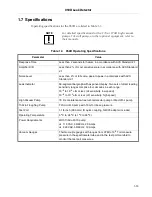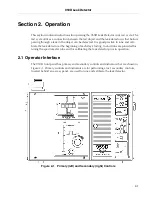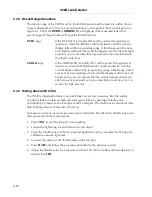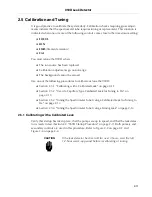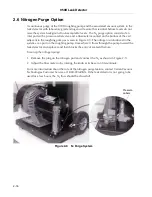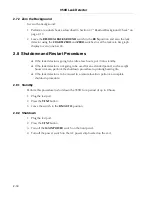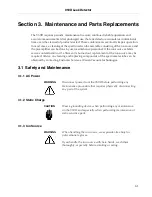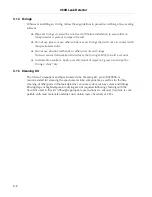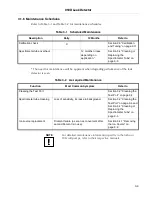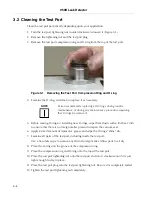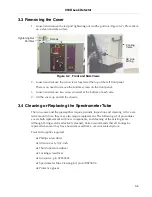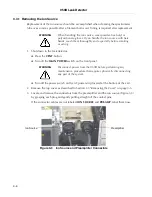
959D Leak Detector
2-11
2.5 Calibration and Tuning
It is good practice to calibrate the system daily. Calibration checks requiring gross adjust-
ments indicate that the spectrometer tube requires tuning or replacement. This situation is
indicated when one or more of the following controls come close to their maximum setting:
❑
FOCUS
❑
ION
❑
EMIS
(filament emission)
❑
CAL
You must
retune
the 959D when:
❑
The ion source has been replaced
❑
Calibration adjustments go out-of-range
❑
The background cannot be zeroed
Use one of the following procedures to calibrate or tune the 959D:
❑
Section 2.5.1 “Calibrating with a Calibrated Leak” on page 2-11
❑
Section 2.5.2 “Use of a Capillary Type Calibrated Leak for Tuning to He” on
page 2-13
❑
Section 2.5.3 “Tuning the Spectrometer Tube Using a Calibrated Leak for Tuning to
He” on page 2-13
❑
Section 2.5.4 “Tuning the Spectrometer Tube Using a Tuning Leak” on page 2-14
2.5.1 Calibrating with a Calibrated Leak
Verify that startup has taken place, that the pumps are up to speed, and that the leak detec-
tor is ready to test (Section 2.2 “959D Startup Procedure” on page 2-7). Both primary and
secondary controls are used in this procedure. Refer to Figure 2-2 on page 2-2 and
Figure 2-4 on page 2-4.
CAUTION
If the leak detector has been off for over 3 hours, wait the full
1/2-hour warm-up period before recalibrating or tuning.
Summary of Contents for 959D
Page 16: ...959D Leak Detector 1 2 D R A F T 9 1 3 0 2 Figure 1 1 Model 959D Leak Detector ...
Page 28: ...959D Leak Detector This page intentionally left blank D R A F T 9 1 3 0 2 ...
Page 48: ...959D Leak Detector This page intentionally left blank D R A F T 9 1 3 0 2 ...
Page 68: ...959D Leak Detector This page intentionally left blank D R A F T 9 1 3 0 2 ...
Page 78: ...959D Leak Detector This page intentionally left blank D R A F T 9 1 3 0 2 ...
Page 81: ......



